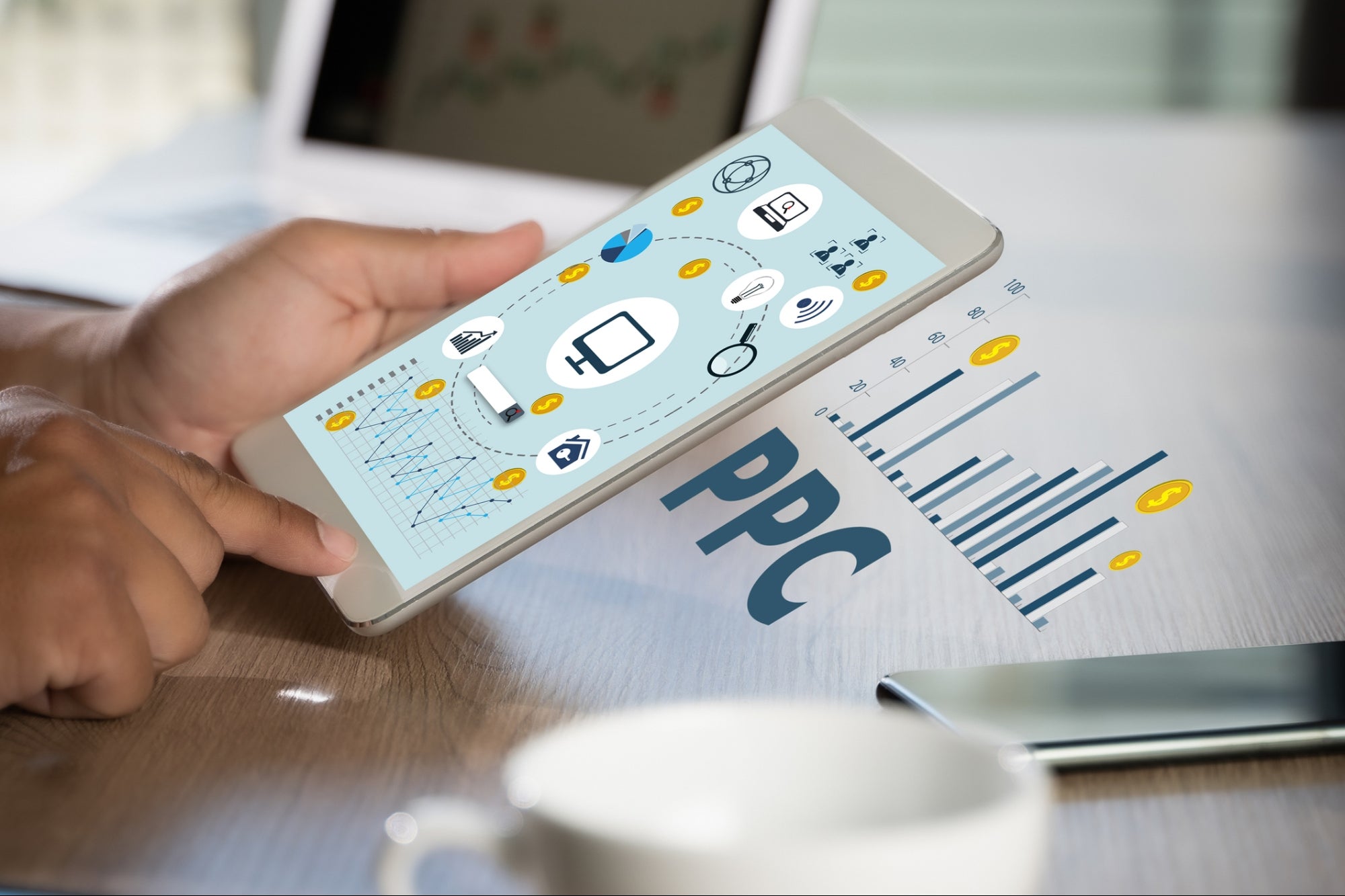4 min read
Opinions expressed by Entrepreneur contributors are their own.
The pandemic is resulting in underlying structural changes to the U.S. economy. That obviously includes a tectonic shift towards ecommerce. In August, ecommerce spending grew 42 percent year-over-year to $63 billion (according to Adobe Analytics) as Americans stayed home and bought products on the web.
Consumer spending comprises 70 percent of the economy. Sellers, distributors and marketers face lucrative opportunities to sell in-demand goods and services. A quick and effective way to get conversions is pay-per-click (PPC) advertising, although there are risks to avoid. Here’s how businesses can generate sales through PPC.
Hire for verticalization
Verticalization is a big word that simply means hiring gurus who specialize in your industry to improve marketing effectiveness.
For example, a PPC campaign in real estate can be vastly different from IT in terms of seasonal shifts in keywords, advertising activity and other minutiae. In real estate, the average cost per click is $2.37, whereas in software it’s $3.80, according to 2020 Hubspot data. In healthcare, the average cost per click is $2.62.
“It’s often preferable to leverage a marketer’s expertise in a niche than to work with a generalist,” says Alexander Nygart in a recent interview. He’s CEO of White Shark Media, a PPC-focused agency. “Specialization usually leads to sound advice on how a client can fill a website with substance. An industry expert can help brands see around corners and stretch budgets.”
To illustrate the importance of pay-per-click, PPC visitors are 50 percent more likely to purchase a product than organic visitors, according to data from Unbounce. And 41 percent of clicks go towards the first three ad positions.
Related: 8 Key Questions to Ask Before Hiring a PPC Company
Test content for high conversions
A fisherman needs an effective net. Unlike pay-per-impressions (PPM) where a brand pays per 1,000 views, PPC lets you pay only for visitors who actually click to your website. The latter brings immediate traffic, as well as trackable results. It is said that with PPM, a marketer pays for potential. But with PPC, you pay for performance.
PPC is like a net that reels in fish. It’s crucial for businesses to design content on landing pages that convert to revenue. This requires A/B testing on sales copy to ensure what’s displayed increases customer checkout. A/B testing is a process that compares different pitches to see which one performs best. Unfortunately for brands, it’s an under-utilized practice. According to the same Hubspot data, only 17 percent of marketers use landing page A/B tests to improve conversion rates.
As you tweak keyword targeting, PPC focuses on audiences who are interested in a company’s goods and services. That enables you to create a tailored presentation on how your solutions eliminate prospects’ problems.
Seize micro-moment opportunities
Timing is everything. Last year, Google’s revenue topped $160 billion with 70.9 percent coming from ads. In 2017, advertisers spent $10.1 billion in PPC, according to SocialMediaToday.
In an influential blog post, Google recommended businesses to be available to consumers at micro-moments. These describe brief windows in time when someone wants to immediately learn something, go somewhere, do something or buy a good or service.
PPC marketers perform the best when they post ads at the exact moment when audiences are most inclined to purchase. In other words, profitable PPC is about targeting the right people at the right time at the right place.
If you’re a healthcare provider, you can post ads for free vaccination as flu season approaches. Or advertise baseball merchandise when a local sports franchise earns a trip to the World Series. These are oversimplified examples, but the key is to ask what future micro-moments create profitable opportunities for your niche.
Related: 3 Tips on Becoming a Pay-Per-Click Expert
Hone your targeting
PPC requires you to know exactly who the target audience is. That includes a deep understanding of demographics, interests, locations, devices, etc. This data will help with keyword selection, as well as choosing specific topics for ads.
According to Brainlab’s State of PPC Report 2019-2020, the top four most important PPC aspects are audience targeting, artificial intelligence/machine learning, conversion rate optimization and attribution. Digital marketers will need to constantly upgrade their skills to meet new challenges. That means acquiring the capability to incorporate chatbots, voice search and AI into ad methods and landing pages in order to convert visitors.
In other words, know thy customers.







